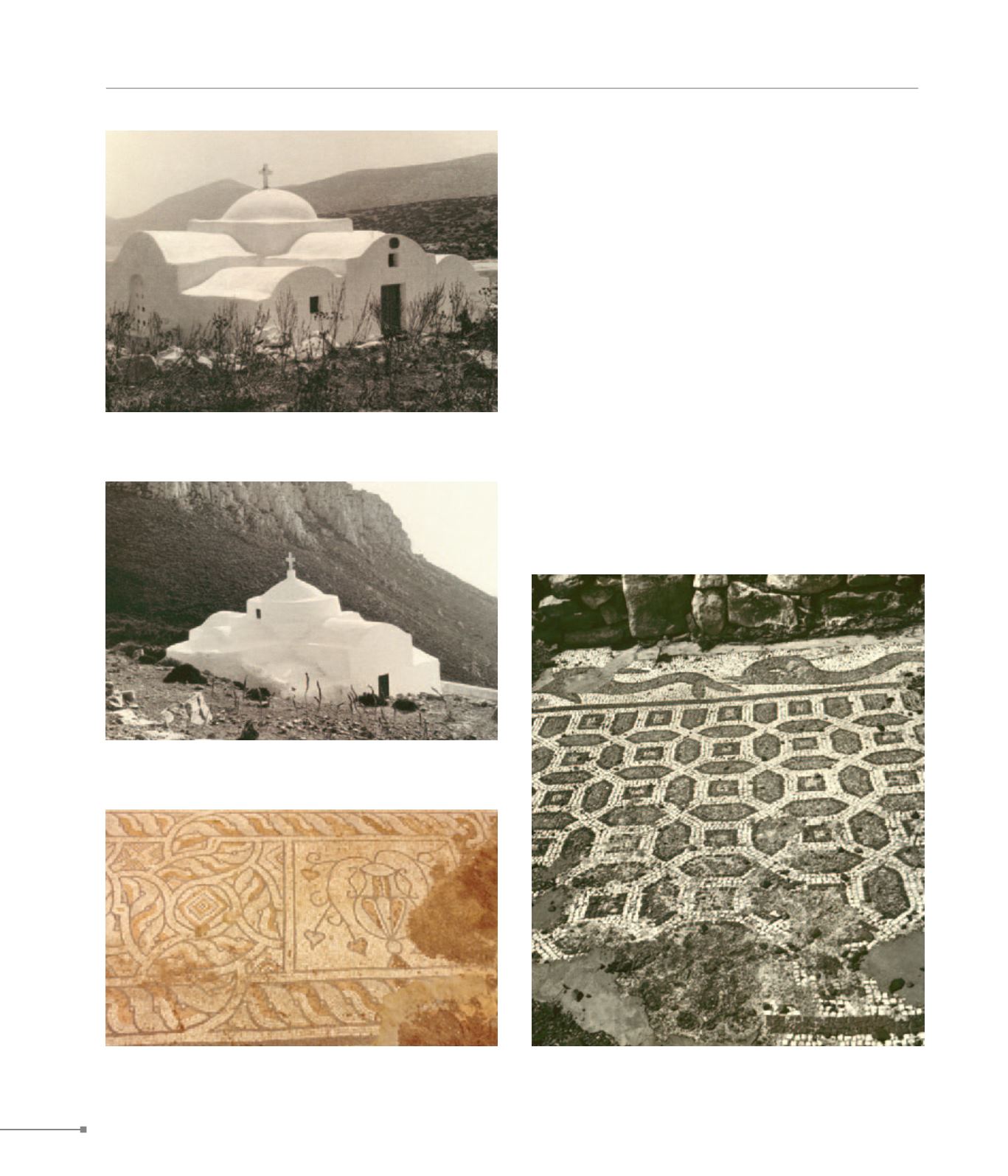
Astypalaia.
Astypalaia.
THE ISLANDS
388
598. Astypalaia, basilica of Kareklis at Analipsi, mosaic (Αστυπάλαια,
θέση Ανάληψη, βασιλική του Καρέκλη, ψηφιδωτό)
598. Astypalaia, basilica of Aghia Varvara at Analipsi, mosaic
(Αστυπάλαια, θέση Ανάληψη, βασιλική Αγίας Βαρβάρας, ψηφιδωτό)
598. Astypalaia, Saint John at Exo Nisi (Αστυπάλαια, Άγιος Ιωάννης ο
Πρόδρομος στο Έξω Νησί)
598. Astypalaia, Saint John at Vathy (Αστυπάλαια, Άγιος Ιωάννης ο
Θεολόγος στο Βαθύ)
The Dodecanese
598.
Astypalaia.
Astypalaia has always been the link between the Cyclades and
the Dodecanese. Butterfly-shaped, the island is split into two,
joined by an isthmus. It seems that at least two settlements
prospered here in the Early Christian period: one on Exo Nisi,
in the W section of Astypalaia, and the other on Mesa Nisi,
i.e. in the E. The first was located at the present-day Livadi,
where remains of two three-aisled basilicas (Aghios Vasileios
and Holy of Holies) (5) with mosaic floors have been found at
the Stefanida promontory, as well as remnants of urban build-
ings close to the coast. The second settlement was situated
at the fishing port of Analipsi (1) − where another two similar
basilicas have been detected (Aghia Varvara and Kareklis), as
well as remains of the Tallaras bath (2) with an interesting mo-
saic depicting the zodiac cycle, and the foundations of other
structures.


